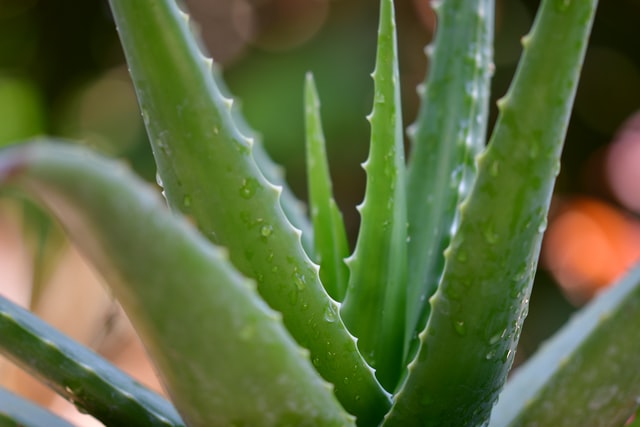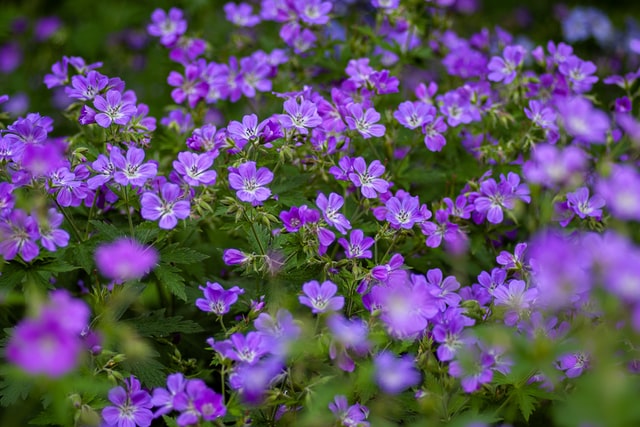A home garden that’s ablaze with color and buzzing with pollinators is a dream that many people hold but not everyone achieves. Are you ready for some greenery in your life but fear your leafy friends won’t survive? Try these three fail-safe garden plants for a garden that you can enjoy with a minimum of effort and very little expertise:
Aloe Vera
Thought to have originated on the Arabian Peninsula, this hardy, medicinal plant is now grown around the world. A member of the succulent family, Aloe vera has thick, fleshy leaves up to 25 inches in length that are filled with a green-colored gel and have two lines of thorny teeth.
An article in Medical News Today reports the following medicinal benefits of aloe vera gel that are supported by research:
- Healthy teeth and gums when used as a toothpaste
- Relief from constipation when taken for up to 10 days
- Promoting wound healing in diabetes-induced foot ulcers
- Antioxidant and possible antimycoplasmic activity
- Protecting breast cancer patients’ skin from the effects of radiation therapy
- Speeding recovery from second-degree burns and sunburn
To cultivate aloe vera, leaf cuttings can be planted in sandy soil with large amounts of clay and lime and no additional fertilizers. Keep it in a sunny area outdoors or as part of your sustainable interior decor.
Note that aloe vera does best in the temperature range of 55 degrees Fahrenheit to 80 degrees Fahrenheit (so it’s perfect to keep indoors). In addition, when it comes to watering this plant, be sure to do it deeply yet infrequently. After each watering, the aloe vera’s soil should be moist. However, let it dry out before watering it again; otherwise, the roots of the plant will rot.
You should generally plan to water your aloe vera plant every two to three weeks during the spring/summer seasons. Meanwhile, water the plant more sparingly in the fall/winter. For instance, if you watered the plant every couple of weeks during the warmer months, then you should water it once a month during the colder months.

Geranium
For garden-lovers worldwide, the colorful geranium represents an easy plant to cultivate that does well in containers or when planted in the ground. Native to subtropical southern Africa, geranium plants of the genus Pelargonium have an herbaceous or woody stem, rounded or deep-cut variegated leaves, and dainty flowers that come in several different colors—the most common being white, pink, and red.
In traditional medicine, the leaf-tea of Geranium pelargonium or “rose geranium” has been used as a remedy for anxiety, inflammation, pain relief, digestion, and hormonal regulation in women (among other uses). The essential oil can also be extracted from the flowers and used in bathwater or added to cosmetics.
To grow geraniums, plant, place, or hang the small bush in a well-drained area with at least 6-8 hours of sunlight and mulch to retain moisture. During the growing season, apply a liquid fertilizer every month or so and remove dead leaves to encourage new growth.
Also, if you keep your geranium in a pot indoors, you should plan to report it once it becomes overgrown. You can tell that your geranium is overgrown if it begins to wilt between waterings. Also, consider regularly beheading any spent blooms on the geranium, as this will help to facilitate additional blooming on the plant.
Lavender
If there’s a plant that every organic home garden needs, it’s lavender. Native to the western Mediterranean and cultivated widely in France, England, Italy, and Australia, lavender is a great choice for attracting pollinators and comes in two main varieties: English lavender or Lavandula vera and French lavender or Lavandula L. Stoechas. English lavender is the more fragrant of the two and is used for medicinal and culinary purposes, while French lavender has daintier, deeper-colored flowers and is mostly used as an ornamental plant.
Whichever of the two you prefer, this hardy herb needs well-drained soil and plenty of sunlight with frequent watering for the first three months and twice-weekly watering thereafter (depending on your climate). In addition, feed the plant once a week with liquid fertilizer, as this will encourage more bountiful flowering and also improve your flower’s color. Very soon, you will have fragrant blooms that you can dry out and use in decorative sachets, heat packs, soaps, and lavender tea.
Keep in mind that once your lavender is well established, it should be relatively drought-tolerant. Still, if you water it consistently, it will grow bigger and ultimately develop more flowers. This is particularly true if you plant the lavender in a container.
To achieve optimal growth and blooming, water the lavender plant whenever its soil becomes dry. Be sure to drench the soil so that the water freely flows from the pot’s bottom area.
Consider Native Plants for an Effortless, Well-Rounded Garden
The easiest garden plants to care for will always be the ones that are native to your local area. By planting a mix of hardy succulents, drought-resistant herbs, and native flowering plants, you will soon be on your way to the garden of your dreams with minimal maintenance and plenty of useful by-products. Happy gardening!






